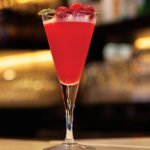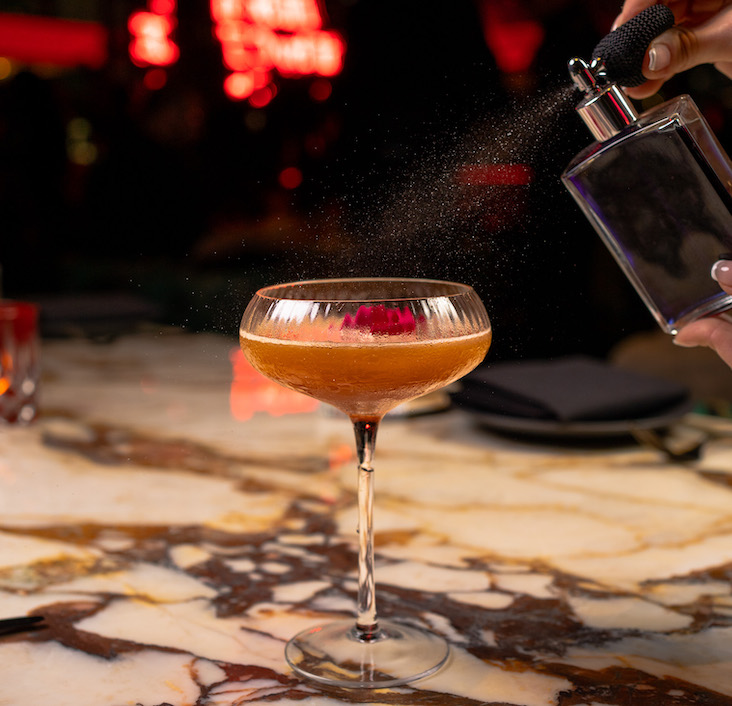Impressing luxury clientele isn’t easy. Catering to this crowd means finding new ways to provide unique experiences.
That’s why the high-end cruise line Seabourn in March announced a partnership with renowned mixologist Brian Van Flandern (pictured atop) to elevate the cocktail programs on all of its ships.
Seabourn has always run a top-notch beverage program ever since the company began operations in 1986. But it was time for an upgrade: The modern craft cocktail boom has both expanded guests’ palates and raised their expectations.
Why Van Flandern? Named “America’s Top Mixologist” in 2011 by The Food Network, Van Flandern served as head mixologist for chef Thomas Keller’s Per Se Restaurant in New York from 2004 to 2007. (Keller has recently partnered with Seabourn as well, with restaurants aboard each ship.)
Certified as a Spirits Professional with the U.S. Bartenders Guild, Van Flandern has authored three cocktail books. He recently redesigned and opened a new bar in the Palm Court in New York’s Plaza Hotel.
“Brian was the perfect fit,” explains Chris Prelog, vice president of hotel operations at Seabourn Cruise Line, “because he has an authentic approach to craft cocktails that’s really unique.”
Van Flandern founded Creative Cocktail Consultants, an extensive bartender-training program, in 2008. The company designs corporate craft cocktail programs and educates bartenders in top hotels, restaurants and resorts in more than 40 countries throughout the world.
The background in teaching mixology was key for Seabourn. The cruise line didn’t want Van Flandern simply to update the beverage program; it charged him with raising the abilities and knowledge of the entire bartending staff.

Seabourn ships currently have three bars on board, each with its own theme and drink menu.
Beefing Up Bars Onboard
Seattle-based Seabourn, part of Carnival Corp., currently operates three ships: Seabourn Odyssey, Seabourn Sojourn and Seabourn Quest. It’s adding a fourth, Seabourn Encore, later this year.
There are three bars onboard: The Club, The Observation and The Patio; guests can also order drinks at The Grill by Thomas Keller. Each bar has its own theme and menu, though if customers discover a cocktail they love at one bar, they can order it at any of the others.
The Patio at the pool deck is a Tiki lounge that includes tropical staples, like the Mai Tai, made with Bacardi light rum, fresh lime juice, Cointreau, simple syrup, orgeat syrup and mint sprig; or the Pina Colada, with Zacapa 23 rum, Bacardi light rum, fresh shredded coconut, fresh pineapple juice, cane sugar simple syrup and vanilla syrup.
The Club lounge serves classic cocktails made famous by celebrities. There’s the Cosmopolitan, as enjoyed by Sarah Jessica Parker’s character on Sex in the City. Seabourn makes it with Ketel One Citron vodka, Cointreau, lime juice, sugar syrup and cranberry juice.
Also on The Club menu is the Orwellian Negroni, named not for the author George Orwell but as a reference to Orsen Wells, who popularized the cocktail in the U.S. in 1949. Seabourn’s version uses Tanqueray Ten gin, Carpano Antica Formula sweet vermouth and Campari.
The Observation lounge aims to introduce modern, innovative cocktails that are new to the majority of the cruise line’s guests. Van Flandern encourages Observation lounge guests “to explore the menu and experiment with spirits you have traditionally sworn off.”
His offerings here include the Smokin Margarita, made with Herradura Blanco tequila, Del Maguey Tobola mezcal, fresh lime juice, agave nectar and egg white; the Upper East Side, with Bombay Sapphire gin, yellow chartreuse, fresh lemon juice, demerara sugar syrup, fresh tarragon and absinthe rinse; and the Mango Picante, with Martell Cordon Bleu Cognac, Boiron Mango puree, fresh lemon juice, simple syrup, freshly muddled cilantro and a chipotle chili powder/sugar rim.
The new Encore ship is outfitted with a spa area complete with bungalows where guests can enjoy their own private bars. Van Flandern said the guests at these bars will be the first to try his newest cocktail creations.
Seaworthy Sips
The cocktail menus also include the classics that guests have come to expect in restaurants and on cruises, such as Manhattans, Margaritas, Piña Coladas and Mojitos. These menus include just 8 to 10 drinks so that guests do not “glaze over” from the sheer variety that can weigh down some drinks lists, Van Flandern explains.
Working with chef Keller at Michelin Three-Star Per Se changed the way that Van Flandern viewed drink conception. Van Flandern says he began to think about cocktails with Keller’s “flavor-profiling” philosophy, which emphasizes recognizing and balancing the basic tastes and sensory experiences of ingredients. He then passed down this technique to the Seabourn bartenders. “We’re teaching staff to taste cocktails to order,” Van Flandern explains. “We’re having them ask themselves, ‘Is it too tart? Too sweet? Does it have enough alcohol?’ From there they can adjust. Because it’s impossible to make cocktails the same way throughout the whole cruise.”
Starting with fresh, quality ingredients is also critical, he notes. But you can craft cocktails with almost any combination of ingredients, as long as there is a balance of sugars, acids and alcohol.
For example, Van Flandern points to the Upper East Side cocktail from The Observation lounge. The cocktail is not too tart (acidic), he says, not too sweet (sugar) and not too strong or weak (alcohol). The gin and chartreuse share many of the same botanicals, and the tarragon accents the herbaceous flavor profile inherent in the drink.
The tarragon has a mild hint of anise that is enhanced by the absinthe rinse, which provides more aromatics than flavor. The Demerara and lemon juice balance each other; the gin is made with lemon peels as well.
“Every ingredient either complements or deliberately contrasts every other ingredient, and all contribute to some aspect of balance,” Van Flandern says.
Teaching flavor profiling to Seabourn staff is especially beneficial because the cruise line can secure a variety of fresh, local ingredients during the journey, Van Flandern notes. “We’re teaching bartenders how to innovate cocktails using local produce and spirits.”







